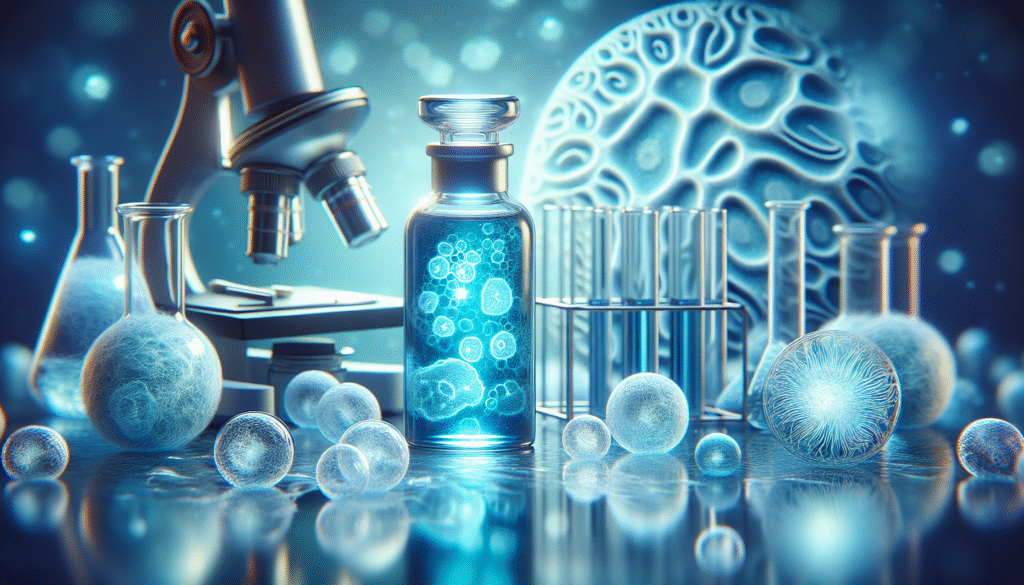
Have you ever considered the intricate relationship between topical treatments and the microbial community on your skin? The skin microbiome plays a pivotal role in maintaining skin health, and emerging research has revealed how various substances, including Methylene Blue, can influence it and, subsequently, the aging process. Understanding this relationship can open up new avenues for skincare and dermatology.
Understanding the Skin Microbiome
The skin microbiome comprises trillions of microorganisms, including bacteria, fungi, and viruses, that coexist on your skin surface. This vast community forms a protective barrier that can help fend off pathogens, regulate inflammation, and maintain skin homeostasis. An imbalance in this microbial ecosystem can lead to skin disorders, accelerated aging, and various dermatological conditions.
Components of the Skin Microbiome
- Bacteria: The predominant organisms on the skin, including Staphylococcus, Corynebacterium, and Propionibacterium, are vital for maintaining overall skin health.
- Fungi: While often overlooked, fungi, particularly the species Malassezia, also play a significant role in skin health.
- Viruses: Various bacteriophages (viruses that infect bacteria) are present and may influence the bacterial population on the skin.
The Role of the Microbiome in Skin Health
Your skin’s microbiome acts as a barrier to protect against harmful microorganisms. It supports immune responses and aids in the production of essential enzymes and molecules, which contribute to skin hydration and barrier integrity. Disruption to this delicate ecosystem can lead to conditions like acne, eczema, and rosacea, all of which can accelerate perceived aging.
What is Methylene Blue?
Methylene Blue is a synthetic dye that has been traditionally used in various medical applications, including treatment of methemoglobinemia and as a biological stain. Recent scientific interest has focused on its potential applications in dermatology, particularly regarding the skin microbiome and aging.
Properties of Methylene Blue
- Antimicrobial Properties: Methylene Blue has been shown to possess broad-spectrum antimicrobial activity, making it effective against various bacteria and fungi.
- Antioxidant Effects: This compound demonstrates significant antioxidant properties, helping to neutralize free radicals that contribute to cellular aging.
- Photodynamic Therapy: Methylene Blue is utilized in photodynamic therapy (PDT) for its ability to generate reactive oxygen species when exposed to light, which can help target abnormal cells in the skin.

The Influence of Methylene Blue on the Skin Microbiome
Research indicates that Methylene Blue can profoundly alter the skin’s microbial balance. Its antimicrobial properties can selectively target harmful bacteria while allowing beneficial species to thrive, thereby promoting a healthier microbiome.
Impact on Beneficial Bacteria
Contrary to some antibacterial agents that indiscriminately kill both good and bad bacteria, Methylene Blue appears to favorably affect certain beneficial strains. By curbing the growth of pathogenic microorganisms, it fosters an environment where symbiotic bacteria can flourish, enhancing skin defense mechanisms and resilience.
Mechanisms of Action
The antimicrobial effects of Methylene Blue operate through several mechanisms:
- Disruption of Bacterial Membranes: Methylene Blue can bind to bacterial membranes, leading to increased permeability and cell death in harmful pathogens.
- Reduction of Biofilm Formation: It can inhibit the formation of biofilms, which are aggregates of microorganisms that provide a protective environment for harmful bacteria, making them resistant to treatments.
- Alteration of Metabolic Pathways: By interfering with the metabolism of pathogenic bacteria, Methylene Blue can disrupt their growth and replication.
Aging and the Skin Microbiome
Aging can significantly influence the skin microbiome, leading to a decrease in microbial diversity and an increase in pathogenic species. This imbalance can contribute to the visible signs of aging, including wrinkles, fine lines, and a loss of elasticity.
How Aging Affects the Skin Microbiome
- Decreased Moisture Levels: Aging skin tends to lose moisture, creating a more favorable environment for harmful bacteria.
- Inflammation: Chronic low-grade inflammation associated with aging can alter the microbial composition, favoring pathogenic species.
- Strain-Specific Changes: Certain beneficial bacteria may diminish with age, reducing the skin’s protective capacity and overall health.

Methylene Blue and Anti-Aging Effects
The potential of Methylene Blue as an anti-aging agent lies in its multifaceted influence on both the skin microbiome and the cellular processes associated with aging. By supporting a balanced microbiome, Methylene Blue can play a crucial role in maintaining youthful skin.
Antioxidant Defense
One of the primary mechanisms by which Methylene Blue exerts anti-aging effects is through its antioxidant properties. By neutralizing free radicals, it helps prevent oxidative stress, a major contributor to skin aging. This action can lead to:
- Fewer wrinkles and fine lines
- Improved skin texture and tone
- Enhanced overall radiance
Photoprotection
Methylene Blue’s unique ability to absorb light within specific wavelengths provides an added layer of photoprotection. This characteristic can help mitigate the harmful effects of UV exposure, a significant factor in premature aging.
Cellular Energy Production
Research suggests that Methylene Blue may improve mitochondrial function. Mitochondria are the powerhouses of cells, and their efficient functioning is essential for cellular vitality and longevity. By enhancing mitochondrial activity, Methylene Blue may:
- Boost cellular repair mechanisms
- Improve overall skin health
- Delay the aging process at a cellular level
Practical Applications of Methylene Blue in Skincare
You might be wondering how to incorporate Methylene Blue into your skincare routine. Its applications range from over-the-counter products to professional dermatological treatments.
Topical Formulations
Recent developments in skincare have led to the creation of topical formulations containing Methylene Blue. These products aim to harness its benefits for rejuvenating and protecting the skin. When selecting products, look for:
- Concentration: Lower concentrations are often adequate for daily use, while higher concentrations may be reserved for professional treatments.
- Compatibility: Ensure that the product complements your existing skincare routine and does not conflict with other active ingredients.
- Brand Reputation: Opt for trusted brands that conduct thorough clinical testing to support their claims.
Professional Treatments
For more targeted approaches, professional dermatological treatments utilizing Methylene Blue can provide enhanced results. These may include:
- Photodynamic Therapy (PDT): As mentioned earlier, PDT employs Methylene Blue in combination with light exposure to target specific skin conditions and stimulate collagen production.
- Chemical Peels: Some chemical peel formulations now incorporate Methylene Blue for its antimicrobial properties, promoting clearer and healthier skin after treatment.
Potential Risks and Considerations
While Methylene Blue offers numerous benefits, it is crucial to consider potential risks and incorporate it into your routine mindfully.
Skin Reactions
As with any skincare ingredient, individual reactions may vary. Patch testing before full application is advisable, especially for those with sensitive skin. Monitor for signs of irritation, redness, or allergic reactions.
Interaction with Other Ingredients
Methylene Blue can interact with certain skincare ingredients. It’s wise to consult with a dermatologist to assess compatibility with your current routine and avoid potential conflicts.
Conclusion
Understanding how Methylene Blue influences the skin microbiome and aging unveils a promising frontier in skincare. The dual impact on microbial balance and cellular processes positions Methylene Blue as a valuable ally in anti-aging treatments. By fostering a robust skin microbiome and combating oxidative stress, it offers the potential for a more youthful appearance and enhanced skin health.
As research continues to unveil more about Methylene Blue’s multifaceted role in dermatology, staying informed can empower you to make educated decisions about skincare. Whether through topical formulations or professional treatments, the insights on Methylene Blue pave the way for innovation in combating aging and promoting overall skin wellness. Choose wisely, consult professionals, and embark on a journey toward healthy, vibrant skin.